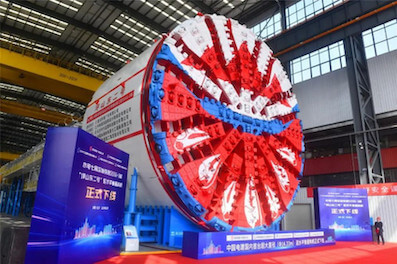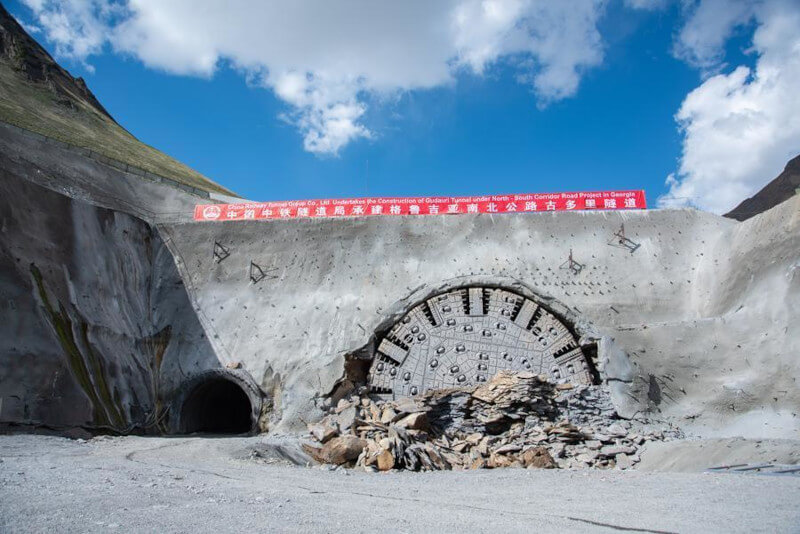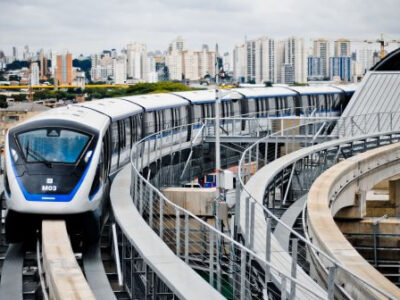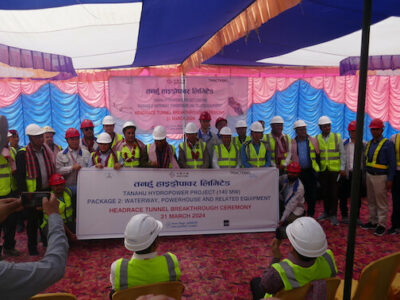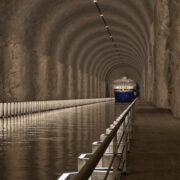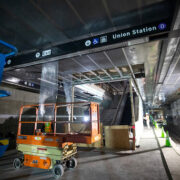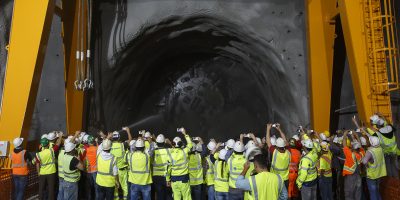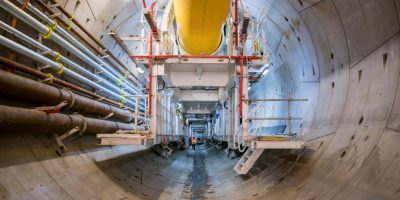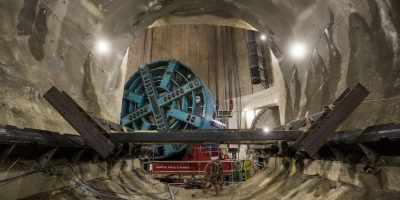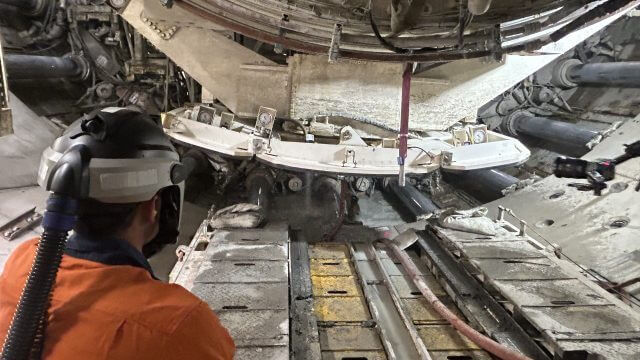
With a 47% incline, the inclined pressure shaft (IPS) is aimed to be tunneled by Australia’s Snowy 2.0 hydropower project
As part of the waterway, this shaft is due to link the headrace tunnel with the underground power station and is 1.6km long and has a 10m diameter.
In order to excavating the IPS, TBM Kirsten has been substantially modified to tunnel uphill after finishing the 2.9km emergency cable and ventilation tunnel.
The Herrenknecht machine’s working platforms, equipment and operator’s cabins all pivot to remain horizontal and the walkways become steps and ladderways.
Also the excavated rock will be moved through a screw conveyor from the cutterhead, that feeds into a sandwich conveyor that has face-to-face rubber belts to hold the material so it can be transported down the steep slope without spillage.
Considering that producing the precast segments for the IPS is important, at the project’s precast manufacturing facility in Cooma, one of the two carousels has also been modified.
The IPS segments involve a world-first force-activated coupling system designed to withstand the powerful internal forces of water moving through the inclined tunnel.
According to project director Dave Evans: “The specially manufactured segments will change the world of hydropower. It means we can do less steel lining, we can move power stations closer to the surface which is what we’ve done here, and construct an inclined pressure shaft with a TBM which all makes it safer, quicker and the quality a lot better.”
Due to the extreme and fluctuating water pressures in the IPS, the concrete segment rings lining the tunnel equipped with bespoke connectors to handle this problem and the force activated coupling system (FACS) comprises specially-developed steel couplers with pin and socket elements.
When the segment rings are interlocked, the pre-stressed FACS keep the joint closed when the tunnel experiences sharp changes in pressure from turbine operations and shutdowns.
The Future Generation JV partner Webuild as well as designer Lombardi were responsible to develop this new technology.
A large-scale test is being conducted by installing eight FACS rings to link the emergency, cable and ventilation tunnel with the IPS.
In January, Snowy Hydro announced the breakthrough of the final three metres of the power station’s 223m-long transformer hall cavern crown.
As Australia’s largest renewable energy project, Snowy 2.0 is going to link Tantangara Reservoir (top storage) with Talbingo Reservoir (bottom) through 27km of tunnels and a power station with pumping capabilities. The location of this hydropower station will be almost 800m underground at Lobs Hole in the Snowy Mountains in New South Wales.


